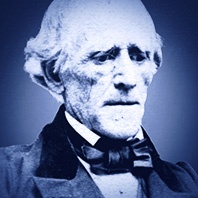Rubrik: Worth reading
The American astronaut David Scott (* 1932) conducted an interesting experiment on the Moon, toward the end of the Apollo 15 mission in July/August 1971. In front of a running camera, he dropped a hammer (2.9 lb) and a falcon’s feather (0.06 lb), just to prove Galileo Galileis’ (1564–1641) thesis that objects fall to the ground with the same speed, regardless of their mass, provided the air resistance does not slow them down, as it is the case on Earth. On our planet, this experiment could only be demonstrated in a vacuum.
Read more
When the sunlight appears on the Moon’s surface in a flat angle, interesting lighting effects are created, due to the mountains and valleys, which can be observed quite well from the Earth. A well-known effect is the so called »golden handle«. This is when the Jura Mountains (»Montes Jura«) are illuminated 4 to 5 days before the full moon and appear as a bright arc, in front of the still darkened Sea of Showers (»Sinus Iridum«) of the Mare Imbrium. This is reinforced by the fact that the boundary of light and shadow, which is called »terminator«, runs directly through this area.
Read more
The comedy horror film »The Fearless Vampire Killers«, directed by Roman Polański in 1967, is a classic of the genre. The film tells the story of the vampire scientist Professor Abronsius and his assistant Alfred (played by Roman Polański), who go on a vampire hunt in the snowy mountains of Transylvania and encounter various bizarre figures, and of course the beautiful daughter of the inn keeper Sarah (played by Sharon Tate, whom Polański married in 1968). The film entrances with its absurd and simultaneously funny atmosphere, created by the skillful interactions between light, music, scenery and actors. Thereby, satirical elements resonate as well, when the rotten aristocracy is represented in the form of the undead.
Read more
When inviscid lava flows out of the volcano, it is possible that cavities are created inside the conduits, due to the different speeds of flow and temperatures. It is like a roof being formed above the flow of lava, which continues to flow inside. After cooling of the rocks, tubular cavities remain.
This phenomenon exists on Earth when volcanoes erupt, and scientists assume that those tubes and cavities could also be prevalent on the Moon, dating from a time when vulcanoes were still active there. The lesser gravity benefited the formation of the tubes and might have also contributed to the fact that there could be kilometer-sized cavities underneath the Moon’s surface.
Read more
The German poet and novelist Joseph Freiherr von Eichendorff (1788–1857) counts among the foremost representatives of Romanticism. Many of his poems had been set to music and were sung.
Von Eichendorff, born in Ratibor (today Racibórz in Poland), studied originally law and worked in a variety of administrative civil service positions, up until he retired. Simultaneously, he devoted his time to his writing and publishing skills, until he died from pneumonia in 1857.
Read more
Luna 2 was a Soviet space probe that impacted the Moon on 13th/14th September 1959. Space probes are unmanned flying objects that are used for exploration. In this case, it was about exploring the Moon, with the goal to fly a human to the Moon and have them return safely. History shows that this did not become possible until ten years later, with the moon landing of Neil Armstrong within the framework of the Apollo 11 mission, in July 1969.
Read more
The tarot is a pack of playing cards that is used for mystical interpretations. It has a long tradition, possibly dating back to the ancient Egyptian time. Playing cards started to circulate in Europe at around the 14th and 15th century, among them also the so called “tarock” (in Italian “tarocchi”), which is considered to be the predecessor of what is now known as tarot, and still today established independently as a game of cards.
Over time, the symbolism and interpretation begins to move to the forefront and the cards become a popular tool for mystics and fortune tellers.
Read more
Inspired by his trip to the coast of Maine, USA, the American artist and lithographer Fitz Hugh Lane (1804–1865) – aka Fitz Henry Lane – created the full moon painting »Fishing Party«, in 1855. He was a representative of the American luminism, a painting style characterized by a specific form of light-flooded landscapes in the 19th century (lumen = lat. light).
Read more
While the waste problem continues to assume serious dimension on our planet, we find, when examined more closely that people do not only leave trash behind on Earth. Thus, there are tons of scrap metal from satellites and rockets, which circle around the Earth, and also on the deserted Moon there is already a lot of waste that has been left behind by astronauts on their missions. Furthermore, there are countless space probes on the Moon, which were deliberately smashed or landed there, after relevant images and data had been transmitted to Earth. Clearly, it appears to be part of human nature to produce waste and to spread it everywhere on a large scale.
Read more
Columns:
Worth reading | 1 Comment
Everyone knows that about once a month is full moon … but, strangely enough, a full moon is always on a different day each month and always at a different time. The reason is that the moon month is shorter on the average, than the calendar month. Without being to mathematical, one can say that a moon cycle lasts approx. 29.5 days. This is how the time of full moon spreads irregularly throughout the calender months and it happens (about every 2.5 years) that two full moon dates fall onto the same month, one at the beginning and one at the end of the month. This second full moon is called a “blue moon” today.
Read more
Columns:
Worth reading | 27 Comments










